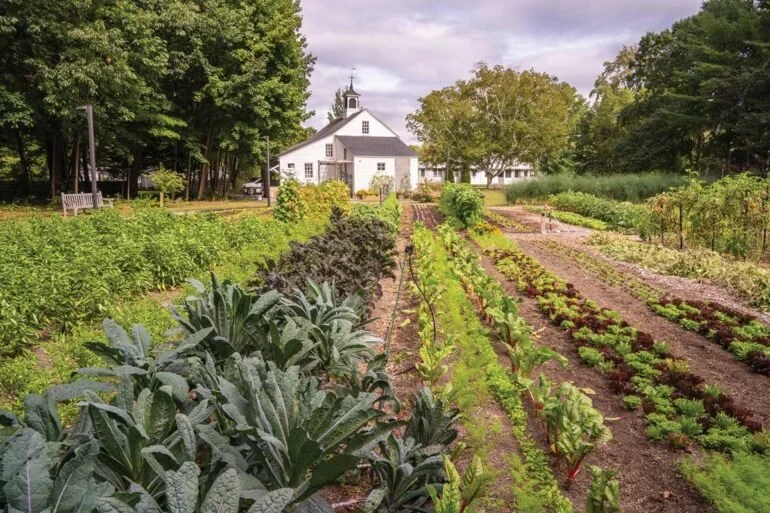Ian Trask’s Favorite Maine Place
Among his favorite places to pass time are the student organic gardens at Bowdoin College.
By Joel Crabtree
From our November 2022 issue
When he was studying biology at Bowdoin College in the early 2000s, Ian Trask was set on a career in science research. Then, after graduating, the Massachusetts native spent a couple of years working in genetics labs and found the work didn’t live up to his romantic expectations.
At Bowdoin, however, Trask had developed a strange little hobby: taking spoons from the dining hall, then bending and twisting them into little sculptures. While enrolled, he hadn’t taken a single art class, but in his early 20s, he got to know Bowdoin professor and sculptor John Bisbee, who was bringing a group of Bowdoin students to Tennessee’s Bonnaroo Music & Arts Festival, to craft interactive sculptures there.
“It was the first time in my life where I woke up in the morning and I had nothing to do all day but make art,” Trask remembers. “I found that experience to be very energizing.”
This month, Trask has two big solo shows up, Mind Loops, at Rockland’s Center for Maine Contemporary Art, and Life Hack, at West Gardiner’s Center for Maine Craft. Though the work is different at each — wall-mounted installations in Rockland, computer mice transformed into insectoid cyborgs in West Gardiner — both are informed by Trask’s science background and bear what’s become his artistic stamp: the use of man-made refuse for materials, including discarded electronics and parts, junk-store bric-a-brac, and literal trash.
But as much as his work relies on synthetic debris, Trask has a bucolic streak, and when he’s not making art at his studio in Brunswick’s Fort Andross mill, he’s gardening or tending to chickens at home, across the Androscoggin River, in Topsham. Among his favorite places to pass time are the student organic gardens at Bowdoin, where Trask picked up a part-time job to learn the ins and outs of organic horticulture. Visitors to one of the quiet, green plots at the edge of campus might find a greenhouse Trask helped build, a row of fruit trees he helped plant, or a hardy kiwi vine he spent countless hours treating and pruning.
“The more time you spend in a place, the more you feel connected to it,” Trask says, reflecting on the garden. “Knowing it’s in such a high-traffic location, where a bunch of students are going to receive the same education and formative experience, it’s nice to know that in some ways, I’ve contributed and left a mark there.”
